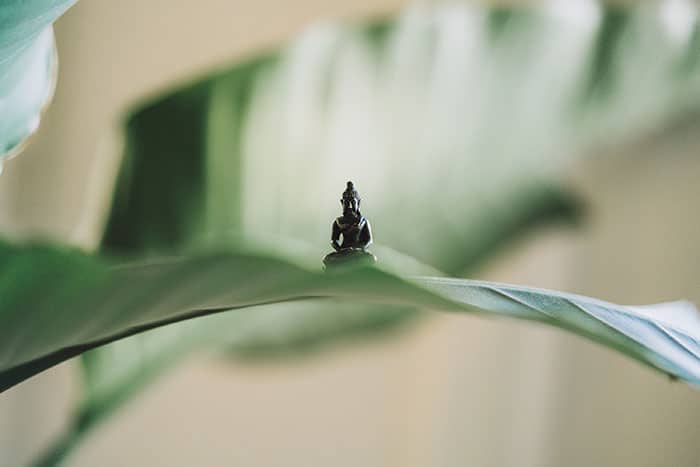Pranayama refers to the art of yogic breathing. It is an ancient tool used to calm the breath, and consequentially the mind and senses.
Basic Principles:
According to yogic literature, the energy (Chi, or life force) flowing though the world and each one of us, is called prana. Prana is carried throughout our bodies via the vayus, which are responsible for transferring and channelling this subtle energy. Vayu roughly translates to wind. The vayus reflect our natural subtle rhythms and play a large role in our health, alignment and lives.
Prana is divided into five ways according to its movement and function – and so, there are five vayus. Each vayu is given a physical location, physical and subtle function. Together, they serve to energise and connect all of our activities, on multiple levels. Hindu and yogic traditions are famously comfortable with the idea that Absolute Reality, while formless and transcendent, is extremely capable of manifesting in both divine and mundane forms.
For example, on a physical level, prana vayu is responsible for our eating of food, sama vayu digests this food, vyana vayu circulates nutrients around the body, apa vayu then eliminates waste material, and finally udana vayu allows us to utilise the energy derived, for physical activity.
At the same time, on the level of the mind: prana governs the intake of impressions and ideas, sama then digests these, vyana circulates the information, apana removes waste (such as negative thoughts), before udana finally allows us to experience mental progress and growth. Through this system, mental imbalances can be viewed as an imbalance in vayu function.
Encompassing physical, physiological and spiritual levels, the depth of this interwoven system is truly limitless. Still, we’ll try our best to explore each vayu in more detail, providing some key asanas to work with them. Many of TINT’s programs include this pranayamic work, such as Faith Hunter’s Chakra Awakening Body and Soul.
1. Prana vayu (inward moving breath)
All that we take in, from perceptions, emotions, to the food we consume – is brought with the prana vayu.
In pranayama, this refers to the inward moving breath. Located in the heart and brain, this channel is responsible for inhalation within the physical body. The prana vayu relates to water within the subtle body and allows us to absorb sensations, feelings and thoughts within the mind. The mental function of prana vayu relates to emotion.
Practice that incorporates heart-opening asanas will stimulate this channel. To activate your prana vayu, try postures such as: bridge poses, bow pose, camel pose and standing cobra.
“As wind drives away smoke and impurities from the atmosphere and its inherent quality is to burn and purify the area, pranayama is a divine fire which cleanses the organs, senses, mind, intellect and ego.”
2. Apana vayu (downward moving breath)
The apana vayu governs the downward and outward flow of energy within our bodies. In pranayama, this refers to the downward moving breath.
Located in the lower centre of the body, this channel is responsible for elimination. Within the subtle body, it relates to earth and the capacity to maintain resistance within the mind. The mental function of apana vayu relates to ego.
Maintaining balance between the prana and apana vayus is essential to for a healthy mind and body. If we release too much, we will become undernourished. Contrastingly, if we hold too much in, toxicity may occur. We must find balance; allowing in new life energy with inhalation and releasing that which no longer serves us with exhalation.
To connect with your apana vayu, choose grounding, standing poses such as forward folds, to release to the mind. Other asanas for this include seated forward fold, bound angle pose and tree pose.

‘We must find balance; allowing in new life energy with inhalation and releasing that which no longer serves us with exhalation.’ Photograph on Unsplash.
3. Samana vayu (equalising breath)
At the navel, the inner winds of the upper and lower body meet. The samana vayu unites the upward energy of prana with the downward energy of apana. Similar to a whirlpool of converging energy, the samana vayu churns around the abdomen, digesting everything: our food, air, emotions, experiences and thoughts.
In pranayama, this refers to the equalising breath. This channel relates to the element of ether within the subtle body. Within the mind, it reflects the capacity to create space, balance, equilibrium and equanimity. The mental function of samana vayu corresponds with the individual self.
This vayu creates power in our core, bringing us balance. Associated with the solar plexus chakra, self-confidence arises from this fiery collision of energy, encouraging momentum.
In our yoga practice, this samana vayu is activated with twists and abdominal postures to neutralise, or energise the core. Asanas that are perfect for this include crow, chair pose, boat pose and abdominal twists.
4. Udana vayu (ascending breath)
Udana vayu channels the flow of prana from lower to higher planes. Key to spiritual practice, it directs prana to the energy centres within the brain and central axis of the etheric body.
In pranayama, Udana vayu refers to the ascending breath. Located within the throat, it governs speech and expression in the physical realm. Within the mind, it encourages the power of perception and the ability to ascend in consciousness. The mental functioning of udana vayu relates to reason.
Practicing this involves poses that direct flow to the upper back, neck and head. To connect with Udana vayu, inversion asanas are key. Try a shoulder stand, headstand or perhaps fish pose.
5. Vyanu vayu (diffusive breath)
The final inner wind integrates and balances all of the vayus. Pervading the entire body, Vyana’s expansive and nourishing energy governs all movement, from our limbs, nervous system and circulation; stirring the body to life through motion.
In pranayama, this refers to the diffusive breath. Within the subtle body it relates to air and the heart chakra. In terms of the mind it allows pervasion and comprehension. The mental function of this vayu relates to feeling (citta).
When incorporating this vayu into your practice, postures that involve whole movement the body are most are most beneficial. Try side plank, downward dog standing cobra, or warrior III.
Together in Practice
A wonderful phenomenon that you’ll likely find is that a combination of the vayuus is something that has naturally occurred and exists within your practice. After all, full body practice intuitively leads to a yogic and physical balance. However, with the conscious acknowledgement of these energies, you might find yourself rearranging asanas.
A suggestion might be to first use prana vayu postures to go inward, moving to apana vayu postures as an anchor, before samana vayu to unite these. Finally end your practice with Udana vayu (perhaps shavasana) to ascend the mind in a meditative state of deep relaxation. Obviously there is total flexibility here, do what feels right for you.
Many of TINT’s programs include the five vayus in practice, such as Katchi Ananda’s Art of Awakening. A gentle acknowledgment of the vayus can bring awareness to the subtle energy expanding and flowing through our bodies. It will encourage the mind to clear, drifting inward to the source of prana – infusing your yoga practice with a deepened nourishing quality and clarity.





